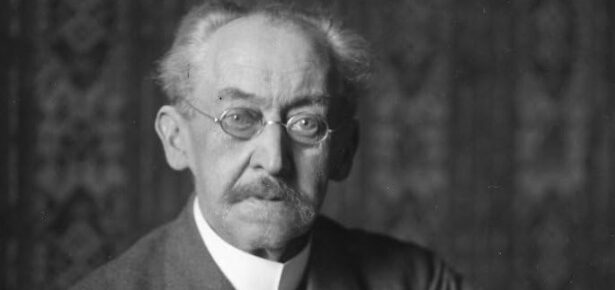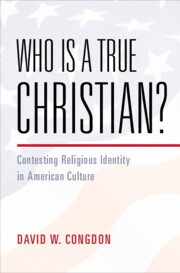
Adolf von Harnack in May 1923, public domain.
The term “essence of Christianity” has an archaic feel about it, not unlike colloquial phrases such as “made in the shade” or “butter and egg man.” According to the Google Books Ngram Viewer, the phrase peaked around 1850—thanks to the George Eliot’s translation of Ludwig Feuerbach’s The Essence of Christianity—and declined sharply after 1905. In German, the peak occurred in 1903, due to the mass popularity of Adolf von Harnack’s Das Wesens des Christentums (which translates as The Essence of Christianity), published in English as What Is Christianity?
But the concept is as relevant today as it ever was, even if it appears in very different forms today. On March 17, 2024, at the Freedom Night event held at Calvary South OC in San Clemente, the right-wing activist Charlie Kirk, founder of Turning Point USA, told the audience: “If you vote Democrat as a Christian, I think you can no longer call yourself a Christian. You have to call yourself something else. I do not think you can be a Christian and vote Democrat.” A few weeks earlier, Parker Miller wrote an article for the Washington Examiner with the headline: “Christianity is incompatible with the Democratic Party.”
Such claims are not unique to the Christian Right. During previous election cycles, memes about “Republican Jesus” were often accompanied with the hashtag #FakeChristian. More recently, the public Christian intellectual David Bentley Hart was asked by the Christian Century about his thoughts on American conservatism. Hart responded: “National conservatives—the people who think Jesus would have loved the Second Amendment and hated Mexicans—are simply not Christians.”
These statements might seem a long way from Harnack’s reflections on the kingdom of God and the infinite value of the human soul, but that is merely a reflection of how much our priorities have changed. Harnack’s lectures on the essence of Christianity in 1899–1900 came on the heels of Harnack’s defense of the Lutheran pastor Christoph Schrempf, who in 1892 aroused a heated controversy over his refusal to use the Apostles’ Creed in the administration of baptism due to theological disagreements with certain articles. Schrempf was ultimately defrocked as a result. Earlier in his career he had argued that Christians ought to be conscientious objectors and opposed what we would now call Christian nationalism, but it was his stance on the ancient baptismal creed that prompted his removal from ordained ministry.
Today, of course, it is quite the opposite. While many still profess adherence to the traditional doctrines, few American Protestants today are all that familiar with any creed or would care one way or another about its use in the liturgy. But removing a flag from the church, challenging civil pieties, or advocating for progressive social policies—those will almost certainly elicit an uproar.
Political scientist Michele Margolis has shown that, in the current American landscape, political convictions shape and often determine religious identity more consistently than the reverse. As important as this is, I provide a broader historical perspective in my new book, Who Is a True Christian? Contesting Religious Identity in American Politics. The story I tell looks at how Christian theologians, ministers, and public intellectuals have renegotiated and redefined the boundaries and definitions of Christianity since the Protestant Reformation. These efforts span the full theological and political spectrum, ranging from the likes of John Locke and John Henry Newman to James Cone and James Lindsay.
Conservative, traditionalist Christians have tended to view the quest for the essence of Christianity as a uniquely liberal project. The assumption is that conservative adherents to creedal orthodoxy have no need for a Christian essence, since they maintain the tradition in unaltered purity. My central argument is that this is fundamentally false. Conservatives and liberals alike are forced to posit an “essence”—we can call it a norm, rule, identity, core, or something else if we prefer. Modernity has made liberals of us all, whether we like it or not.
Postliberals see this as reason to reject modernity. That way lies authoritarianism, and we see the fruit of that approach in the calls for integralism and white Christian nationalism—but these are no less efforts at questing for an essence, even if the essence they propose is Christofascist. I see our situation instead as an opportunity to embrace a more thoroughgoing pluralism: not merely a interreligious pluralism, but an intrareligious pluralism. Rather than questing for a singular essence that claims to be “truly Christian,” we might instead promote a plurality of essences.
If there is a true Christianity on my view, it is the quest itself.

Who Is a True Christian?
by David W. Congdon
Latest Comments
Have your say!